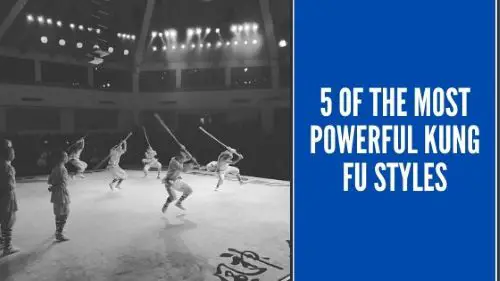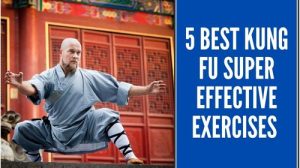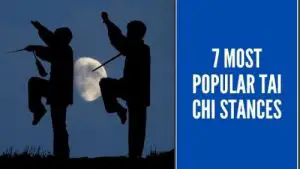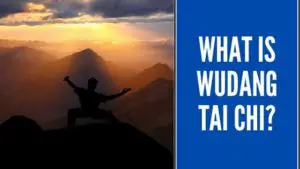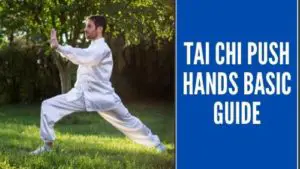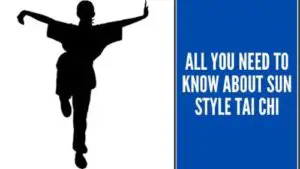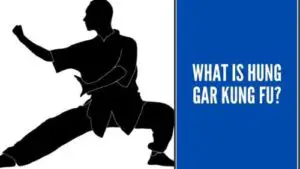Originating in China and touted as the grandfather of hand-to-hand combat fighting, Chinese martial art, Kung Fu, is one of the most practiced martial art forms in the world. There is a huge variety of Kung Fu styles, but they all share the same basis: face your opponent with lightning speed and refined power.
Chinese martial arts have held philosophical and spiritual significance in Chinese culture that dates as far back as 2000s B.C. In this context, Kung Fu became a part of the concepts of Confucianism and Taoism. It became known as one of the ideal things people should practice, shaping the body and the mind, with or without the use of weapons.
The exact number of Kung Fu styles today is unknown, however, there is a list of some that have gained popularity all over the world and even in pop culture, television, and the movies. Here are some of the most powerful Kung Fu styles, all known for its beautiful and flowing forms but some deadlier than others.
Shaolin Kung Fu
As the name suggests, Shaolin Kung Fu was started by monks from the Shaolin Temple in China – a temple with a rich history dating back to 495 A.D., built upon Mt. Song and literally translates to “small forest”.
This beautiful form of northern-style Kung Fu uses wide stances, kicks, blocks, and punches against opponents. The punches are often a mixture of open and closed hand strikes. There is minimal emphasis on throws and joint locks, but often uses a mix of force-with-force hard techniques, and soft techniques which utilizes the opponent’s strength against them.
Strongly tied to Buddhist and Taoist principles, Shaolin Kung Fu is mainly used to protect against opponents and disable them as quickly as possible. In recent times, Shaolin Kung Fu has picked up a more theatrical approach, incorporating acrobatics and entertainment into the form. It is widely believed that the original style of Shaolin Kung Fu practiced by Shaolin monks were much more powerful than what we see today, although possibly less aesthetically pleasing.
Many Kung Fu practitioners do not recommend prolonged training of Shaolin for adults due to high incidences of knee injuries. This acrobatic-type Kung Fu is suited better for children.
One of the most famous martial arts celebrities, Jet Li, made his film debut in 1982 in the movie Shaolin Temple where he played a Shaolin Kung Fu novice.
Wing Chun
Going into the southern territory, Wing Chun Kung Fu is all about close-quarters combat. Although the form does not date as far back as other Kung Fu styles, Wing Chun’s origins developed during the Shaolin and Ming resistance movements against the Qing Dynasty.
The most important aspect of Wing Chun is balance and posture. When fighting in the Wing Chun style, elbows are kept close to the body and practitioners tend to strike opponents rapidly and gracefully.
Wing Chun is recommended for beginners who are interested in the fighting aspect of martial arts rather than the defensive aspect. However, strikes to the head and face can cause brain damage that could lead to depression and suicide even decades after the injury was formed. It is therefore evident that this Kung Fu style can be pretty powerful.
Wing Chun was Bruce Lee’s first martial art, taught by Chinese martial artist, Yip Man.
Tai Chi
Tai Chi is undoubtedly the most popular Kung Fu style today and has millions of followers worldwide. This Kung Fu style has even gained its popularity in the Western world for its health benefits linked to increased longevity.
Created by a Taoist hermit Zhang Sanfeng in the 12th century, Tai Chi incorporates Taoist concepts of complementary duality ie: yin-yang and Qi. Unlike other Kung Fu styles, it consists of slow and coordinated movements, focusing mostly on breathing and awareness.
A Tai Chi master would teach you that violence should not be countered by violent means. Rather, Tai Chi has to exhaust your attacker’s approach where practitioners mirror the movements of their attacker until the attacker’s strength diminishes.
Although not a physically powerful form of Kung Fu, Tai Chi is seen as a very powerful form of mental training, requiring lots of patience and endurance. It is also one of the only Kung Fu styles to have minimal injuries, and practitioners gain the most health benefits from it.
In Hollywood, Keanu Reeves plays a martial artist practicing Tai Chi in the movie “Man of Tai Chi”.
Baguazhang
Just like Tai Chi, Baguazhang is an internal Kung Fu style and its history can be traced back to 19th century China. Its name literally translates to “eight trigram palm” which refers to one of the canons of Taoism. It is therefore evident that Baguazhang is heavily influenced by Taoist philosophy.
This Kung Fu style is slow, fluid, and graceful, focusing mostly on footwork. It’s characteristic walking in circles motion forms the basis of Baguazhang. Having an astonishing repertoire of techniques, Baguazhang’s circular motion footwork allows practitioners to confront several opponents simultaneously, and in this aspect, pretty powerful if faced with more than one opponent.
The main purpose of this Kung Fu style is to improve health. Similar to Tai Chi, the theory behind learning Baguazhang is to improve a person’s overall life and balance through meditation.
The Northern Praying Mantis
Also known as Shandong Praying Mantis, named after its province of origin in Shandong, this extremely powerful Kung Fu style has roots traced all the way back to the Ming Dynasty.
Emulating a praying mantis, the distinct ‘hook’ move is a technique where the practitioner joins one to three fingers together in a swift movement which resembles a powerful blow of a whip. A blow to the head may cause unconsciousness and memory loss. Being attacked by this form of Kung Fu is extremely painful, potent, and effective.
Other characteristic moves of the Northern Praying Mantis style are punches and strikes from the arms, wrist, elbow, and knees, along with composite footwork. These swift movements are uniquely aesthetic and are one of the most powerful Kung Fu styles.
Related: What is Hung Gar Kung Fu all about?
In the gaming world, Sega’s Virtua Fighter series has a character named Lion Rafale that uses the Praying Mantis style of fighting.
The 2014 Netflix TV series Marco Polo also has a character called Jia Sidao using the Praying Mantis Kung Fu style. There are many other films like The Forbidden Kingdom (2008) and even the animated film Kung Fu Panda depicting the use of the Northern Praying Mantis style of Kung Fu.
